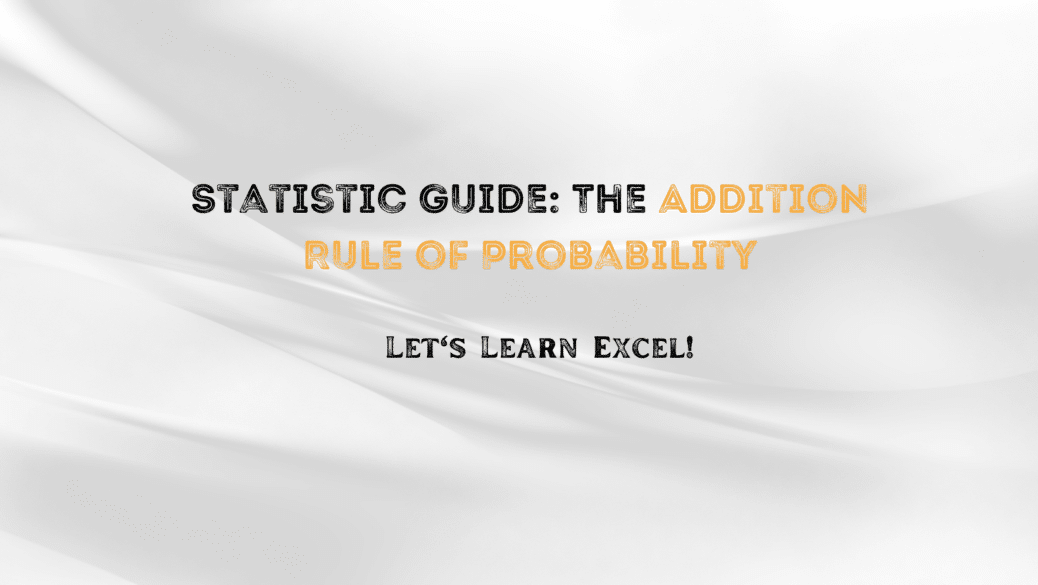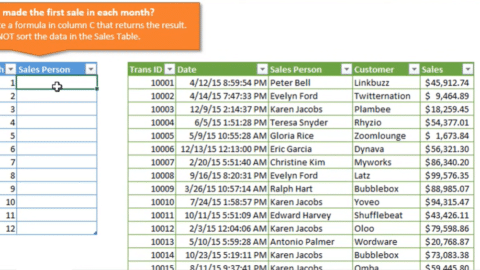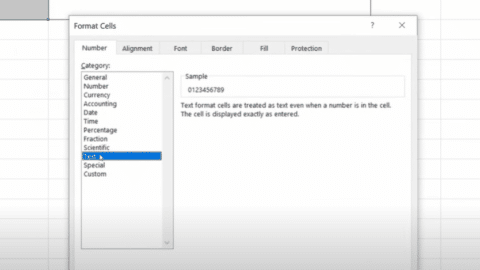Statistic Guide: The Addition Rule of Probability
Navigating the complexities of probability can seem daunting, especially for those new to the subject. But understanding some foundational principles, like the Addition Rule of Probability, can shine a light on the intricacies of the topic. Given the surge in data-driven decisions and businesses vying for digital attention, deep knowledge about such rules is essential. Here’s a comprehensive guide for the curious minds that found us through Google, seeking clarity and detail.
Table of Contents
Unraveling the Addition Rule of Probability
What is the Addition Rule of Probability?
In simple terms, the Addition Rule of Probability helps us find the probability that one event or another event occurs, and it comes in particularly handy when events are mutually exclusive or not mutually exclusive.
For events that cannot happen simultaneously (mutually exclusive), the addition rule states:
For events that can happen at the same time (not mutually exclusive), the formula expands:
H2: Breaking Down the Formula
At first glance, the Addition Rule of Probability can appear intimidating, but diving deeper into its components provides clarity:
-
- and : These represent the individual probabilities of events A and B.
- : This is the probability that both A and B occur at the same time.
- : Represents the probability that either event A, event B, or both events occur.
The subtraction of in the second formula is crucial because it corrects for double-counting when both events occur simultaneously.
Applying the Addition Rule: Real-Life Examples
Rolling Dice in a Board Game
Imagine you’re playing a board game where you roll a die, and you win if you roll a 2 or a 5. The probability of rolling a 2 is 1/6, and the probability of rolling a 5 is also 1/6. Since these are mutually exclusive events (you can’t roll a 2 and a 5 at the same time on a single die), you apply the simpler Addition Rule of Probability:
P(winning)=P(2)+P(5)=16+16=13
Drawing Cards from a Deck
Suppose you draw a card from a standard deck, and you want to know the probability that it’s either a King or a Heart. These events aren’t mutually exclusive since one of the cards is the King of Hearts. Using the Addition Rule of Probability:
(King or Heart)=(King)+(Heart)−(King of Hearts)
=452+1352−152=1652
Potential Misinterpretations
A common error while applying the Addition Rule of Probability is overlooking overlaps, especially in complex situations with multiple non-mutually exclusive events. Missing out on accounting for these overlaps can lead to overestimation, which could distort the entire statistical analysis.
Real-world Implications
Imagine a marketing analyst trying to determine the probability of a user clicking on any advertisement from a series of ads. By misapplying the Addition Rule of Probability and not accounting for users who might click on multiple ads, the analyst could drastically overestimate the campaign’s success.
The Interplay with Other Rules
The Addition Rule of Probability doesn’t exist in isolation. It often works hand-in-hand with other probabilistic rules like the Multiplication Rule. Recognizing when to apply which rule or combining them appropriately is vital for accurate analyses.
Tips for Efficiently Using the Addition Rule
Clearly Identify Your Events
The effectiveness of the Addition Rule of Probability hinges on your ability to distinctly identify events and classify them as mutually exclusive or not.
Watch Out for Overlaps
In cases where events are not mutually exclusive, always account for overlaps to prevent double-counting.
Visualize with Venn Diagrams
For those more visually inclined, sketching out a Venn Diagram can help in understanding and applying the rule.
Scenario: A Game of Cards
Imagine you’re at a weekly card game night. As the game progresses, there’s a specific round where players have to draw cards from a standard deck, and special points are awarded if a player draws any face card (King, Queen, Jack) or any card from the Spade suit.
Now, you, being a person of strategy (and having read this guide on the Addition Rule of Probability), decide to calculate your chances.
Setting Up the Problem
- Let’s denote:
- Event A as drawing a face card.
- Event B as drawing a Spade.
- There are 12 face cards in a deck of 52 (4 Kings, 4 Queens, 4 Jacks).
- There are 13 Spades in the deck.
However, remember that among the Spades are the King, Queen, and Jack of Spades. These represent an overlap between Events A and B.
Conclusion
The Addition Rule of Probability stands as a foundational pillar in the vast world of probability and statistics. Whether you’re a student, a business analyst, a data scientist, or a curious learner who chanced upon this through a Google search, mastering this rule paves the way for a deeper understanding of more complex probabilistic phenomena.
Hello, I’m Cansu, a professional dedicated to creating Excel tutorials, specifically catering to the needs of B2B professionals. With a passion for data analysis and a deep understanding of Microsoft Excel, I have built a reputation for providing comprehensive and user-friendly tutorials that empower businesses to harness the full potential of this powerful software.
I have always been fascinated by the intricate world of numbers and the ability of Excel to transform raw data into meaningful insights. Throughout my career, I have honed my data manipulation, visualization, and automation skills, enabling me to streamline complex processes and drive efficiency in various industries.
As a B2B specialist, I recognize the unique challenges that professionals face when managing and analyzing large volumes of data. With this understanding, I create tutorials tailored to businesses’ specific needs, offering practical solutions to enhance productivity, improve decision-making, and optimize workflows.
My tutorials cover various topics, including advanced formulas and functions, data modeling, pivot tables, macros, and data visualization techniques. I strive to explain complex concepts in a clear and accessible manner, ensuring that even those with limited Excel experience can grasp the concepts and apply them effectively in their work.
In addition to my tutorial work, I actively engage with the Excel community through workshops, webinars, and online forums. I believe in the power of knowledge sharing and collaborative learning, and I am committed to helping professionals unlock their full potential by mastering Excel.
With a strong track record of success and a growing community of satisfied learners, I continue to expand my repertoire of Excel tutorials, keeping up with the latest advancements and features in the software. I aim to empower businesses with the skills and tools they need to thrive in today’s data-driven world.
Suppose you are a B2B professional looking to enhance your Excel skills or a business seeking to improve data management practices. In that case, I invite you to join me on this journey of exploration and mastery. Let’s unlock the true potential of Excel together!
https://www.linkedin.com/in/cansuaydinim/









